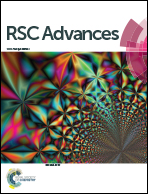Enhancement of light-harvesting efficiency of dye-sensitized solar cells via forming TiO2 composite double layers with down/up converting phosphor dispersion
Abstract
The light-conversion efficiency of dye-sensitized solar cells (DSSCs) was improved about 13.5% and 6.0% by dispersing a down-conversion phosphor (DCP) and an up-conversion phosphor (UCP) in a TiO2 layer, respectively. Also, further improvement in the efficiency could be achieved by forming DCP/UCP/TiO2 double composite layers (η = 8.88%), which is about 21% higher than that of the cell (η = 7.36%) without the phosphor dispersion.


 Please wait while we load your content...
Please wait while we load your content...